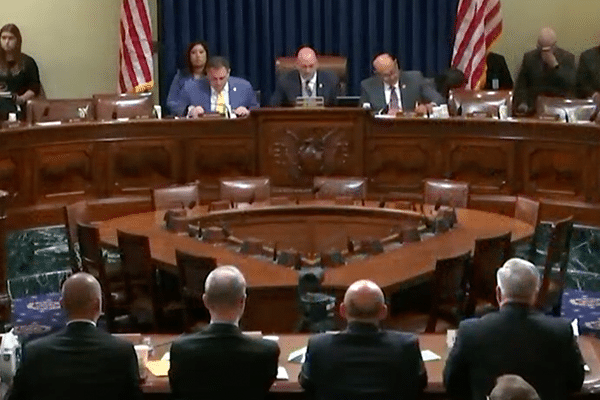In October, I received a surprising email from a staff member of the U.S. Congressional Committee on Homeland Security. He had read an article I published about human trafficking and requested a virtual meeting.
During our phone conversation, I shared the human trafficking trends I identified through my research and humanitarian work in South America and Central America. In Bogota, Colombia I researched how people are trafficked to the United States—often through the southern border—as well as around the world. I also gained considerable insight into human trafficking ring operations after interviewing former traffickers in prison.
Related: Leading the Battle Against the Drug Traffickers of Colombia
After I shared my findings with this Congressional staffer, I was formally invited by the Committee on Homeland Security to testify during the hearing, “The Broken Path: How Transnational Criminal Organizations Profit from Human Trafficking at the Southwest Border.”
Testifying Before Congress about Human Trafficking
On November 14, I arrived at the Capitol. I had the opportunity to meet with Congressman Clay Higgins who would be chairing the hearing and other staff members who were very helpful and clearly committed to battling the problem of human trafficking.
There were four guests on the panel, including myself. After entering the committee room, we were sworn in, and the Chairman and committee members provided each panelist the opportunity to deliver five-minute opening remarks.
Watch Highlights from Dr. Sadulski’s Testimony
How Smugglers Collaborate with Human Trafficking Rings
In my testimony, I shared that smugglers work in tandem with human traffickers—a trend I’d discovered through my research.
For example, an undercover coyote (i.e., smuggler) is often mixed in with a group planning to cross the border. If the coyote learns that someone doesn’t have the money to be smuggled across the border, they will sell that person to traffickers for exploitation.
How Trafficking Rings Use Stash Houses to Move Victims
During my opening remarks, I also detailed how transnational criminal organizations use local gangs to manage stash houses in countries on both sides of the border. Stash houses are often organized in a triangle, with three different houses involved in the human trafficking ring.
Related: Stash Houses: Their Role in Human Trafficking and Smuggling
When a trafficking victim is brought to the border and does not have the money to pay for transportation costs, the first house will act as a processing center, stripping the person of their personal items, photographing them, and documenting their debt.
Next, traffickers bring their victims to a second stash house where the actual exploitation occurs, including sex trafficking or drug packaging. Exploitation continues until the person’s debt is paid. Once that occurs, they relocate the victim to the third safe house, returning their passport, clothing and personal items until transportation arrives to bring them to their final destination.
How Juvenile Organ Harvesting Is Lucrative for Human Traffickers
I also testified about my findings in the Central American market for juvenile organ harvesting. One interview I conducted with a former gang member — who was involved in several levels of human trafficking — opened new insights into how organ harvesting worked.
He told me organ traffickers receive an “order” for a specific organ. They then visit homeless shelters, encampments and drug houses where families camp with children. Traffickers would offer money to the parents to take the kids out of that environment and would never return with those children. In one case, an organ trafficker once earned $15,000 to harvest a 12-year-old child’s eye in Mexico.
Read an article in The Washington Times about Jarrod’s testimony
The Importance of This Congressional Hearing
The hearing lasted around two hours. During that time, committee members asked questions and engaged in a dialogue with the panel. You can view the hearing in its entirety.
I hope that my testimony sheds light on the current trends in human trafficking and helps lawmakers better understand this crisis so they can enact laws and prosecute those involved with human trafficking—as well as protect victims.
Testifying during this committee was truly an honor and a highlight of my professional career. I greatly appreciate the opportunity to share my research and insight on this devastating crime in our society.
If you have follow-up questions regarding human trafficking or wish to discuss a presentation to your organization, please feel free to contact me at jarrod.sadulski@mycampus.apus.edu.

Comments are closed.